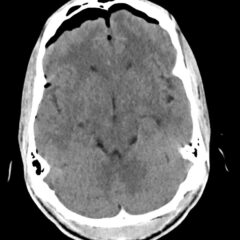Botulism
ABSTRACT:
Audience:
This simulation is targeted to emergency medicine residents and medical students. This case focuses on the diagnosis and management of botulism toxicity, while highlighting the logistical complications of botulism toxicity.
Introduction:
Botulism is a potentially life-threatening emergency that often presents with subtle symptoms, which can progress to paralysis and respiratory failure. A descending flaccid paralysis is typical, initially affecting smaller muscles such as oculomotor, then larger facial muscles. 1,2 Early indications of respiratory compromise are important to recognize. It is important for emergency medicine physicians to be familiar with botulism and recognize the presentation quickly to safely treat the patient. Clinical findings may include: dilated pupils, diplopia, xerostomia, dysphagia, and nausea and vomiting. 3 Treatment priorities include assessment and management of the airway, close monitoring, and coordinating with local agencies to obtain botulinum antitoxin.1
Educational Objectives:
By the end of this simulation learners will be able to: 1) develop a differential for descending paralysis and recognize the signs and symptoms of botulism; 2) understand the importance of consulting public health authorities to obtain botulinum antitoxin in a timely fashion; 3) recognize that botulism will progress during the time period antitoxin is obtained. Early indications of respiratory compromise are expected to worsen during this time window.
Secondary learning objectives include: 4) employ advanced evaluation for neurogenic respiratory failure such as physical examination, negative inspiratory force (NIF), forced vital capacity (FVC), and partial pressure of carbon dioxide (pCO2), 5) discuss and review the pathophysiology of botulism, 6) discuss the epidemiology of botulism.
Educational Methods:
This simulation was conducted using a high-fidelity mannequin with intubating capabilities and real-time vital sign monitoring. Following the simulation, the participants underwent a debriefing session and discussion on botulism. This case was designed as a high-fidelity simulation, but it can be adapted to a low-fidelity simulation or case discussion.
Research Methods:
Following the simulation and debriefing session, participants were provided with a survey to rate the simulation and provide feedback to instructors. Participants were asked open-ended questions about the strengths and areas of improvement of the case, and were asked to rate how they valued the learning content of the case on a 5-point scale.
Results:
Emergency medicine residents expressed positive feedback on the scenario. The residents appreciated the change in clinical course of the patient over time as well as the presentation of botulism.
Discussion:
This simulation is an effective way of teaching about botulism to emergency medicine residents. We used a primary nurse asking questions to progress the case and stimulate the learners to think about certain specific aspects of the case, such as the patient’s weakness or disposition.
Topics:
Toxicology, botulism, emergency medicine, medical simulation.

